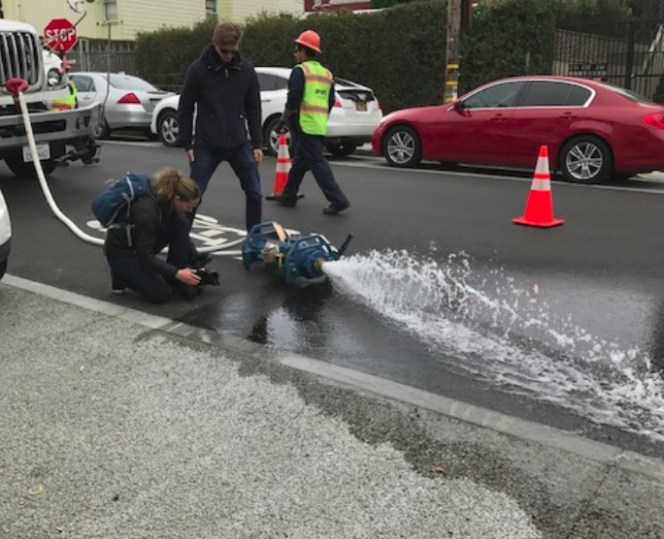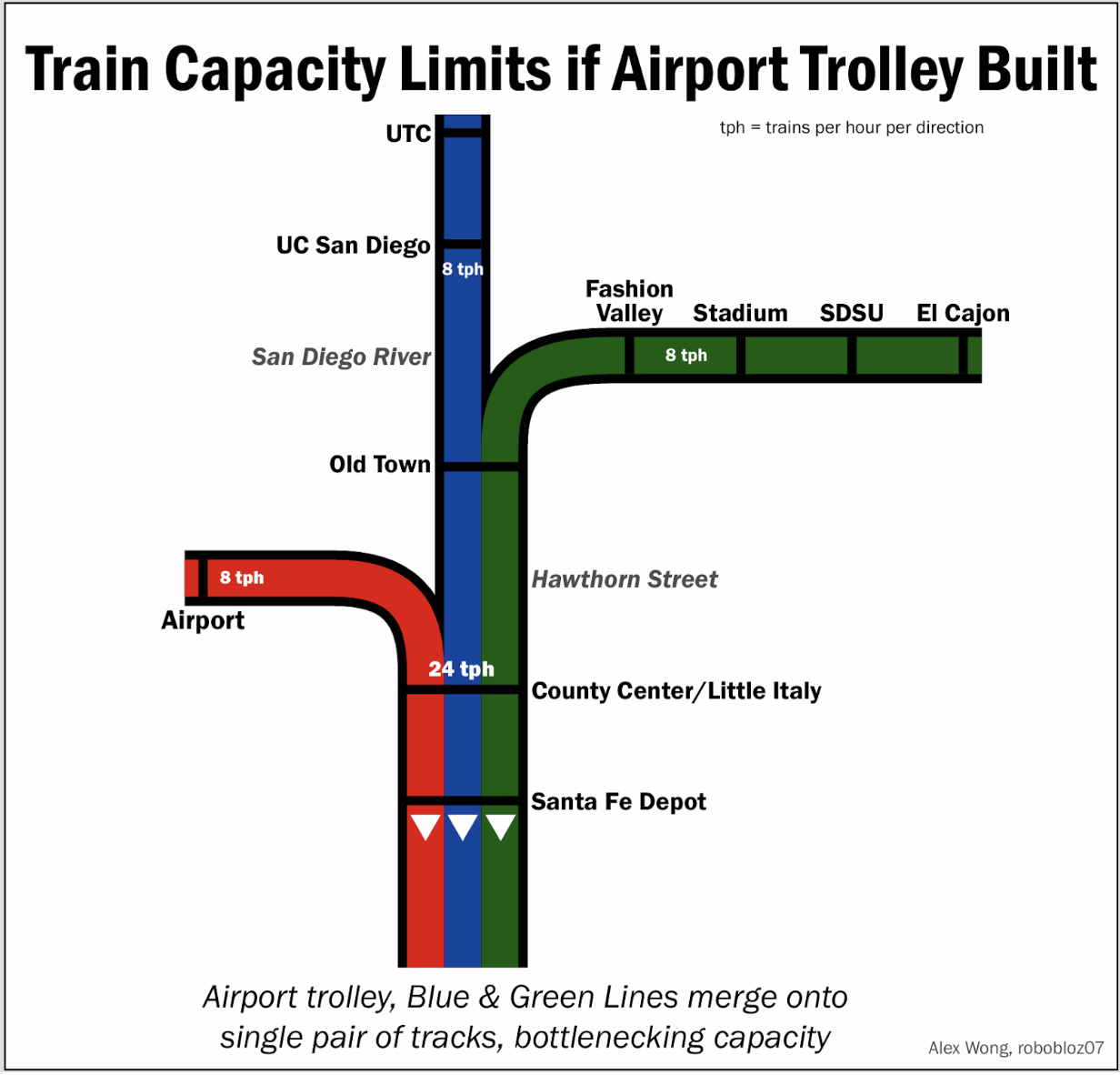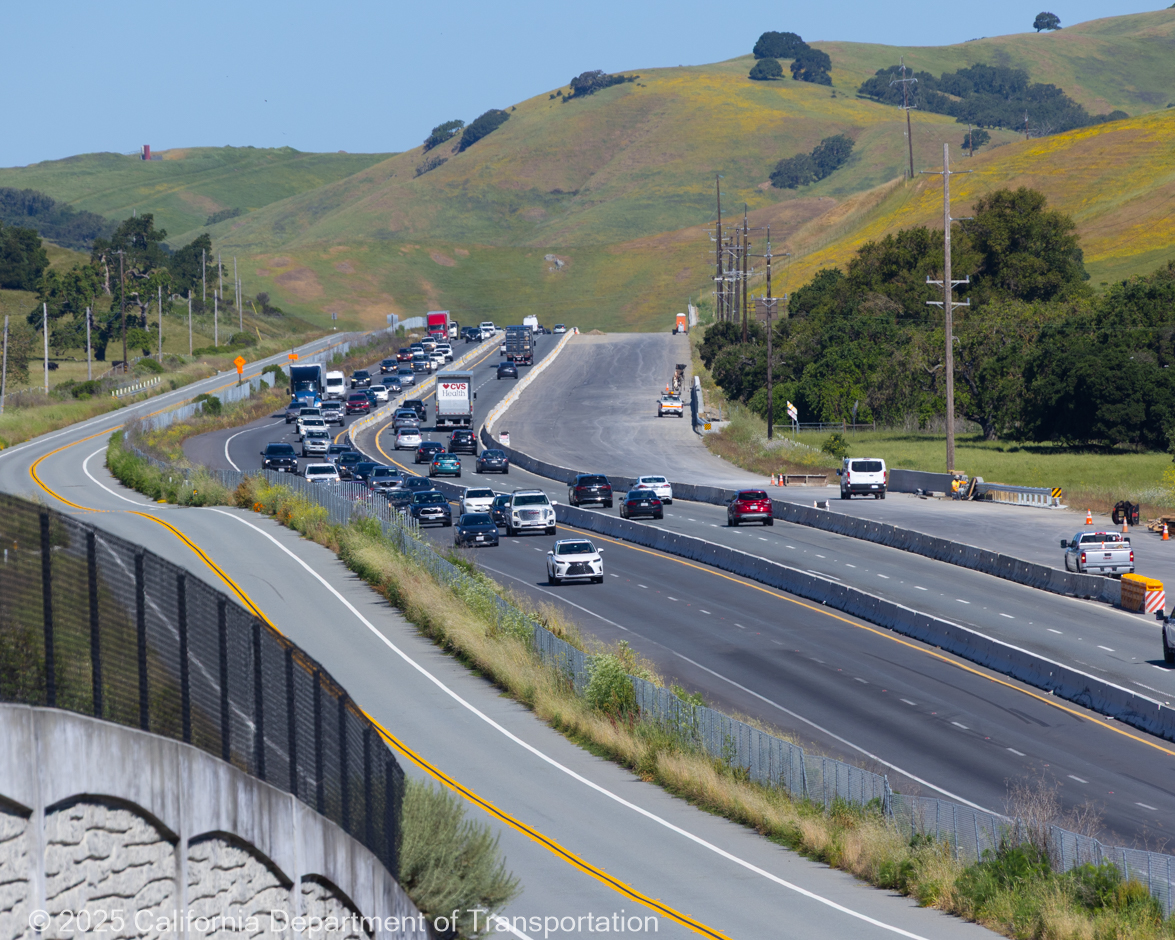The San Francisco Public Utilities (SFPUC) cut the ribbon on its Holloway Avenue Green Street project today, which added permeable surfaces and cisterns for better storm water management on an eight-block stretch of this relatively calm residential street through the Ingleside neighborhood.
The project, which the SFPUC says will "collect and treat 1.1 million gallons of stormwater onsite each year," consisted of digging a trench under the parking lanes of the street and covering it with permeable asphalt. Water is then channeled to large cisterns under the corners of certain intersections. In addition, the city added bulb outs and native-plant gardens to shorten crossing distances and provide an attractive feature for the neighborhood.
The Holloway project is part of a larger initiative to do a better job of managing rain runoff from the streets and is the first to use permeable concrete in the public right-of-way. "These projects not only reduce the burden on our sewer system, but they transform neighborhoods by increasing urban greening, biodiversity, and public spaces in the area," said SFPUC Commissioner Francesca Vietor, in a statement. "This is the future," said SFPUC General Manager Harlan Kelly Jr. "... we're adopting new methods of stormwater collection and treatment so we can ensure that San Francisco leads the way in sustainability and innovation."
It should be noted that Holloway Avenue is also a bicycle corridor between the Balboa Park BART station and San Francisco State University. The fresh pavement and improved drainage should make riding a bit more comfortable.
More pictures of the work below.






